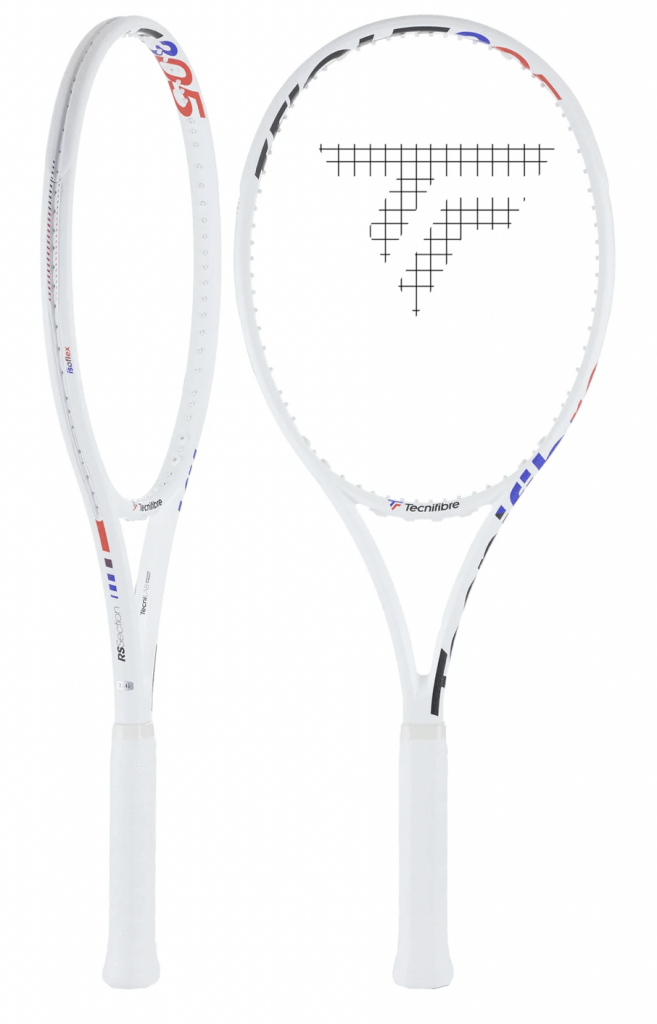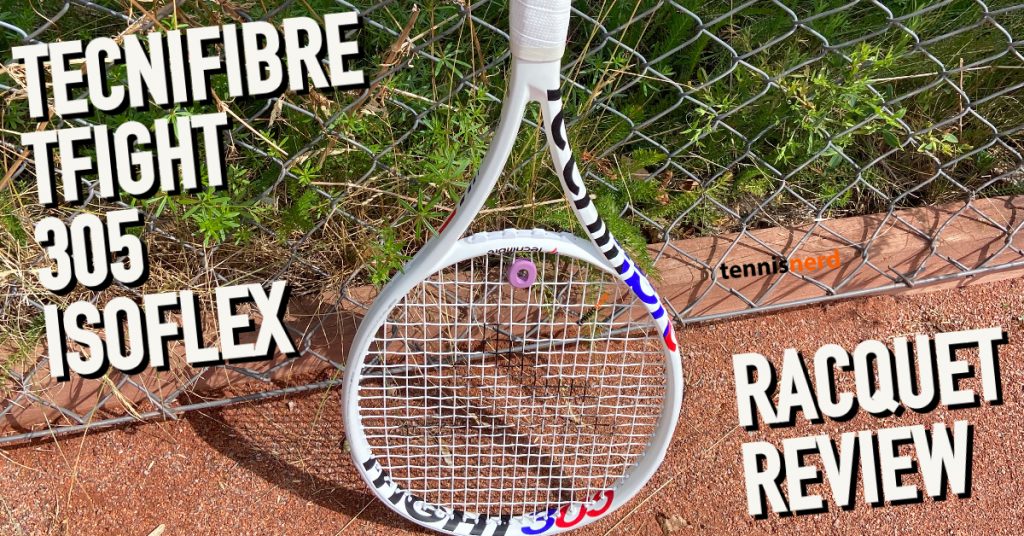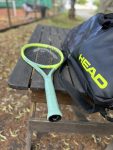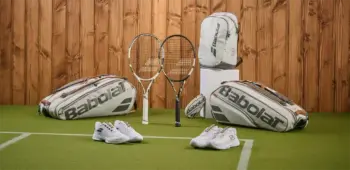I wrote a preview about the new Tfight 305 ISO racquet a few weeks back. Here is my Tecnifibre Tfight 305 ISOFLEX review.
Tecnifibre Tfight 305 ISOFLEX Review
Daniil Medvedev is endorsing the new Tecnifibre Tfight 305 ISOFLEX racquet but is using another model, click here if you want to find out about Daniil Medvedev’s racquet.
I wrote this in my preview.
What is new in the Tecnifibre Tfight ISO 305 compared to the Tfight RS 305 model it replaces? Thanks to the ISOFLEX system it utilizes a variable beam stiffness to create a more forgiving and consistent string bed. The RS beam is still there and like other Tecnifibre racquets, the Tfight ISO 305 is injected with foam for more comfort and stability.
Specs
Technologies: ISOFLEX, RS Section Beam, Foam
Buy: the Tecnifibre Tfight ISO 305 from Tennis Warehouse
You always get my first impressions on Patreon.
Specifications
Comments on the specs
The swing weight looked high on average and my racquet was no different. It was actually higher in swing weight than the Tennis Warehouse Europe average. I measured mine at 342.5 strung with Tecnifibre Razor Code White 1.25.
That’s a bit much for most players and explains the feeling I had of the racquet being a sledgehammer.
Why is the swing weight so high? The issue with foam-filled racquets is that they are even more difficult to quality control. Most racquets come with a quality control guarantee of +-7 grams and +-0.7 cm balance point. That is also the Tecnifibre QC standards. I think this is too much of variance in a sport that rely on grams and millimeters. After having play-tested hundreds of racquets over the years, I can adapt to a racquet after a while, but it’s also difficult to review a racquet that is far off spec since another person might get a completely different specification.
I think one of the biggest steps forward for racquet manufacturers would be to get this issue down to a much lower variance. If there was a promise of the swing weight being within 5 points, we could live with it. But no manufacturers really list swing weight (Prince used to, not sure if they do anymore), which is, in my opinion the most important parameter. Of course they all matter, but if I could only know one metric about a frame, that would be it.
Okay, enough ranting. The fact of the matter is that my frame had a very high swing weight but remained within parameters in terms of weight and balance.
How does it play?
The racquet plays with great precision from the 18×19 string bed, offers good plowthrough (the high swing weight creates a heavy ball) and an overall solid and stable feel. It’s not as plush or comfortable as the Tecnifibre TF40, which I prefer, but it offers a bit more precision and hits a bigger ball if you can maneuver it. A lot boils down to the swing weight of course, which is higher on average for the Tfight.
I think this racquet appeal to advanced players who want precision and a crisper feel. I use the word crisp as meaning stiff, but not harsh. The ball simply doesn’t stay as long on the strings as with the TF40. Some players like that, some won’t. If I would compare these racquets to other brands, the Tfight is more like a Pro Staff or Pure Strike, while the TF40 is a bit like a Blade or a Radical.
Players with arm issues would get more comfort from the TF40, but aggressive players who like to attack the net, might prefer the Tfight due to its direct feel and precision.

Looking for new gear?
Get your tennis racquets from Tennis Only.
Our recommended tennis store for Australia!
Looking for new gear?
Get your tennis racquets from Tennis Warehouse Europe!
Use the code TNERD10 for a 10% discount right now.
Looking for new gear?
Get your tennis racquets from Tennis Warehouse.
Our recommended tennis store for North America!
Summary
The Tecnifibre Tfight 305 Isoflex is a solid racquet with a capital S. To me it played a bit like a sledgehammer with a lot of weight centered towards the head. This made it difficult to maneuver but nice when you managed to contact the ball well. Overall, I still prefer the TF40. The RS version played better for me thanks to the lower swing weight mainly, otherwise I imagine they would play quite similar. If you like the RS, I’m not sure this is worth the update, but I would be keen to listen to players who hit both side by side. To me the Isoflex felt a bit more stable and perhaps playerd with a tad more control, but the swing weight made it difficult for me to make a direct comparison.
It’s worth a demo for advanced attacking players looking for a precise weapon, but most other players would be happier with the TF40 in my opinion.
Keen to hear what you think, if you have tried the new Tfight ISOFLEX.
Buy: the Tecnifibre Tfight ISO 305 from Tennis Warehouse (USA, Canada) or Tennis Warehouse Europe


















How does it compare to ATP XTC 305 18×19 ?
The previous version RS has a lower swing weight, feels a lot brassier and is stiffer. I played well with it, easier to get the racket around, but I never liked the feel. The ISO is much more ‘solid’, granted the swing weight is considerably higher, you need to be able to get the racket around to gets the mass going, but the more I play with it the more I like it. It’s almost plush, would be curious if their next version is an even softer RA. I added the new razor soft 1.25 string and the pocketing and feel are really phenomenal. Can for sure dominate points with it, just have to focus to keep the power from getting away from you.
One of the best frames that i tried… i love this racquet! Agree that is kind of difficult at the beginning because of the higher swingweight, but this make the racquet really solid, and shots very deep and precise… comfortable racquet, and the 18×19 string pattern offers a really good combination of spin and control… I was playing with Gravity Pro (18×20), that i love it, but this one plays really similar with more free power… both are my 2 favorite rackets in the moment, 3rd one is the Blade… if you like one of theses, Iso305 is definitely a try